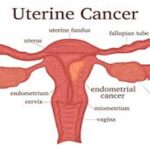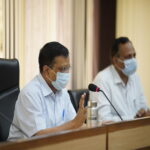Advice on the use of masks in communities : Interim Guidance
India
healthysoch
Geneva/New Delhi, April 08, 2020 ;
Advice on the use of masks in communities, during home care, and in health care settings in areas that have reported cases of COVID-19. It is intended for individuals in the community, public health and infection prevention and control (IPC) professionals, health care managers, health care workers (HCWs), and community health workers. It will be revised as more data become available.
Current information suggests that the two main routes of transmission of the COVID-19 virus are respiratory droplets and contact. Respiratory droplets are generated when an infected person coughs or sneezes. Any person who is in close contact (within 1 m) with someone who has respiratory symptoms (coughing, sneezing) is at risk of being exposed to potentially infective respiratory droplets. Droplets may also land on surfaces where the virus could remain viable; thus, the immediate environment of an infected individual can serve as a source of transmission (contact transmission).
- WHO has recently summarised reports of transmission of the COVID-19 virus and provided a brief overview of current evidence on transmission from symptomatic, pre-symptomatic, and asymptomatic a people infected with COVID-19 (full details are provided in WHO COVID-19 Situation report 73).
- Current evidence suggests that most disease is transmitted by symptomatic laboratory confirmed cases. The incubation period for COVID-19, which is the time between exposure to the virus and symptom onset, is on average 5-6 days, but can be as long as 14 days. During this period, also known as the “pre-symptomatic” period, some infected persons can be contagious and therefore transmit the virus to others. In a small number of reports, pre-symptomatic transmission has been documented through contact tracing efforts and enhanced investigation of clusters of confirmed cases.This is supported by data suggesting that some people can test positive for COVID-19 from 1-3 days before they develop symptoms.
Thus, it is possible that people infected with COVID-19 could transmit the virus before symptoms develop. It is important to recognise that pre-symptomatic transmission still requires the virus to be spread via infectious droplets or through touching contaminated surfaces. WHO regularly monitors all emerging evidence about this critical topic and will provide updates as more information becomes available.
In this document medical masks are defined as surgical or procedure masks that are flat or pleated (some are shaped like cups); they are affixed to the head with straps. They are tested according to a set of standardised test methods (ASTM F2100, EN 14683, or equivalent) that aim to balance high filtration, adequate breathability and optionally, fluid penetration resistance. This document does not focus on respirators; for guidance on use of respirators see IPC guidance during health care when COVID-19 infection is suspected.
Wearing a medical mask is one of the prevention measures that can limit the spread of certain respiratory viral diseases, including COVID-19. However, the use of a mask alone is insufficient to provide an adequate level of protection, and other measures should also be adopted. Whether or not masks are used, maximum compliance with hand hygiene and other IPC measures is critical to prevent human-to-human transmission of COVID-19. WHO has developed guidance on IPC strategies for home care12 and health care settings11 for use when COVID-19 is suspected.
Community settings :
Studies of influenza, influenza-like illness, and human coronaviruses provide evidence that the use of a medical mask can prevent the spread of infectious droplets from an infected person to someone else and potential contamination of the environment by these droplets. 13 There is limited evidence that wearing a medical mask by healthy individuals in the households or among contacts of a sick patient, or among attendees of mass gatherings may be beneficial as a preventive measure. 14-23 However, there is currently no evidence that wearing a mask (whether medical or other types) by healthy persons in the wider community setting, including universal community masking, can prevent them from infection with respiratory viruses, including COVID-19.
Medical masks should be reserved for health care workers :
The use of medical masks in the community may create a false sense of security, with neglect of other essential measures, such as hand hygiene practices and physical distancing, and may lead to touching the face under the masks and under the eyes, result in unnecessary costs, and take -2- masks away from those in health care who need them most, especially when masks are in short supply.
Persons with symptoms should:
- Wear a medical mask, self-isolate, and seek medical advice as soon as they start to feel unwell. Symptoms can include fever, fatigue, cough, sore throat, and difficulty breathing. It is important to note that early symptoms for some people infected with COVID-19 may be very mild; •
- follow instructions on how to put on, take off, and dispose of medical masks; •
- follow all additional preventive measures, in particular, hand hygiene and maintaining physical distance from other persons.
All persons should:
- Avoid groups of people and enclosed, crowded spaces;
- Maintain physical distance of at least 1 m from other persons, in particular from those with respiratory symptoms (e.g., coughing, sneezing);
- Perform hand hygiene frequently, using an alcohol-based hand rub if hands are not visibly dirty or soap and water when hands are visibly dirty;
- Cover their nose and mouth with a bent elbow or paper tissue when coughing or sneezing, dispose of the tissue immediately after use, and perform hand hygiene;
- Refrain from touching their mouth, nose, and eyes.
In some countries masks are worn in accordance with local customs or in accordance with advice by national authorities in the context of COVID-19. In these situations, best practices should be followed about how to wear, remove, and dispose of them, and for hand hygiene after removal.
Advice to decision makers on the use of masks for healthy people in community settings :
As described above, the wide use of masks by healthy people in the community setting is not supported by current evidence and carries uncertainties and critical risks. WHO offers the following advice to decision makers so they apply a risk-based approach.
Decisions makers should consider the following:
1. Purpose of mask use: the rationale and reason for mask use should be clear– whether it is to be used for source control (used by infected persons) or prevention of COVID-19 (used by healthy persons)
2. Risk of exposure to the COVID-19 virus in the local context: The population: current epidemiology about how widely the virus is circulating (e.g., clusters of cases versus community transmission), as well as local surveillance and testing capacity (e.g., contact tracing and follow up, ability to carry out testing). The individual: working in close contact with public (e.g., community health worker, cashier)
3. Vulnerability of the person/population to develop severe disease or be at higher risk of death, e.g. people with comorbidities, such as cardiovascular disease or diabetes mellitus, and older people
4. Setting in which the population lives in terms of population density, the ability to carry out physical distancing (e.g. on a crowded bus), and risk of rapid spread (e.g. closed settings, slums, camps/camp-like settings).
5. Feasibility: availability and costs of the mask, and tolerability by individuals
6. Type of mask : Medical mask versus non-medical mask
In addition to these factors, potential advantages of the use of mask by healthy people in the community setting include reducing potential exposure risk from infected person during the “pre-symptomatic” period and stigmatization of individuals wearing mask for source control.
However, the following potential risks should be carefully taken into account in any decision-making process:
- Self-contamination that can occur by touching and reusing contaminated mask • depending on type of mask used, potential breathing difficulties
- False sense of security, leading to potentially less adherence to other preventive measures such as physical distancing and hand hygiene
- Diversion of mask supplies and consequent shortage of mask for health care workers
- Diversion of resources from effective public health measures, such as hand hygiene
Whatever approach is taken, it is important to develop a strong communication strategy to explain to the population the circumstances, criteria, and reasons for decisions. The population should receive clear instructions on what masks to wear, when and how (see mask management section), and on the importance of continuing to strictly follow all other IPC measures (e.g., hand hygiene, physical distancing, and others).
Type of Mask :
- WHO stresses that it is critical that medical masks and respirators be prioritized for health care workers.
- The use of masks made of other materials (e.g., cotton fabric), also known as nonmedical masks, in the community setting has not been well evaluated. There is no current evidence to make a recommendation for or against their use in this setting.
- WHO is collaborating with research and development partners to better understand the effectiveness and efficiency of nonmedical masks. WHO is also strongly encouraging countries that issue recommendations for the use of masks in healthy people in the community to conduct research on this critical topic. WHO will update its guidance when new evidence becomes available.
In the interim, decision makers may be moving ahead with advising the use of non-medical masks. Where this is the case, the following features related to non-medical masks should be taken into consideration:
• Numbers of layers of fabric/tissue
• Breathability of material used
• Water repellence/hydrophobic qualities
• Shape of mask
• Fit of mask
Home care :
For COVID-19 patients with mild illness, hospitalisation may not be required. All patients cared for outside hospital (i.e. at home or non-traditional settings) should be instructed to follow local/regional public health protocols for home isolation and return to designated COVID-19 hospital if they develop any worsening of illness.
Home care may also be considered when inpatient care is unavailable or unsafe (e.g. capacity is limited, and resources are unable to meet the demand for health care services). Specific IPC guidance for home care should be followed.
Persons with suspected COVID-19 or mild symptoms should:
• Self-isolate if isolation in a medical facility is not indicated or not possible
• Perform hand hygiene frequently, using an alcohol-based hand rub if hands are not visibly dirty or soap and water when hands are visibly dirty; • Keep a distance of at least 1 m from other people;
• Wear a medical mask as much as possible; the mask should be changed at least once daily. Persons who cannot tolerate a medical mask should rigorously apply respiratory hygiene (i.e. cover mouth and nose with a disposable paper tissue when coughing or sneezing and dispose of it immediately after use or use a bent elbow procedure and then perform hand hygiene.)
• Avoid contaminating surfaces with saliva, phlegm, or respiratory secretions.
• Improve airflow and ventilation in their living space by opening windows and doors as much as possible. Caregivers or those sharing living space with persons suspected of COVID-19 or with mild symptoms should: • Perform hand hygiene frequently, using an alcohol-based hand rub if hands are not visibly dirty or soap and water when hands are visibly dirty;
• Keep a distance of at least 1 meter from the affected person when possible;
• Wear a medical mask when in the same room as the affected person;
• Dispose of any material contaminated with respiratory secretions (disposable tissues) immediately after use and then perform hand hygiene.
• Improve airflow and ventilation in the living space by opening windows as much as possible.
Health care settings :
WHO provides guidance for the use of PPE, including masks, by health care workers in the guidance document: Rational use of PPE in the context of COVID-19.24 Here we provide advice for people visiting a health care setting:
Symptomatic people visiting a health care setting should:
• Wear a medical mask while waiting in triage or other areas and during transportation within the facility;
• Not wear a medical mask when isolated in a single room, but cover their mouth and nose when coughing or sneezing with disposable paper tissues. Tissues must be disposed of appropriately, and hand hygiene should be performed immediately afterwards.
Health care workers should:
• Wear a medical mask when entering a room where patients with suspected or confirmed COVID-19 are admitted.
• Use a particulate respirator at least as protective as a US National Institute for Occupational Safety and Health-certified N95, European Union standard FFP2, or equivalent, when performing or working in settings where aerosol-generating procedures, such as tracheal intubation, non-invasive ventilation, tracheotomy, cardiopulmonary resuscitation, manual ventilation before intubation, and bronchoscopy are performed.
• Full infection prevention and control guidance for health care workers is provided here.
One study that evaluated the use of cloth masks in a health care facility found that health care workers using cotton cloth masks were at increased risk of infection compared with those who wore medical masks.25 Therefore, cotton cloth masks are not considered appropriate for health care workers. As for other PPE items, if production of cloth masks for use in health care settings is proposed locally in situations of shortage or stock out, a local authority should assess the proposed PPE according to specific minimum standards and technical specifications.
Mask management :
For any type of mask, appropriate use and disposal are essential to ensure that they are effective and to avoid any increase in transmission.
The following information on the correct use of masks is derived from practices in health care settings.
• Place the mask carefully, ensuring it covers the mouth and nose, and tie it securely to minimize any gaps between the face and the mask.
• Avoid touching the mask while wearing it.
• Remove the mask using the appropriate technique: do not touch the front of the mask but untie it from behind.
• After removal or whenever a used mask is inadvertently touched, clean hands using an alcohol-based hand rub or soap and water if hands are visibly dirty.
• Replace masks as soon as they become damp with a new clean, dry mask.
• Do not re-use single-use masks.
• Discard single-use masks after each use and dispose of them immediately upon removal.
WHO continues to monitor the situation closely for any changes that may affect this interim guidance. Should any factors change, WHO will issue a further update. Otherwise, this interim guidance document will expire 2 years after the date of publication.







